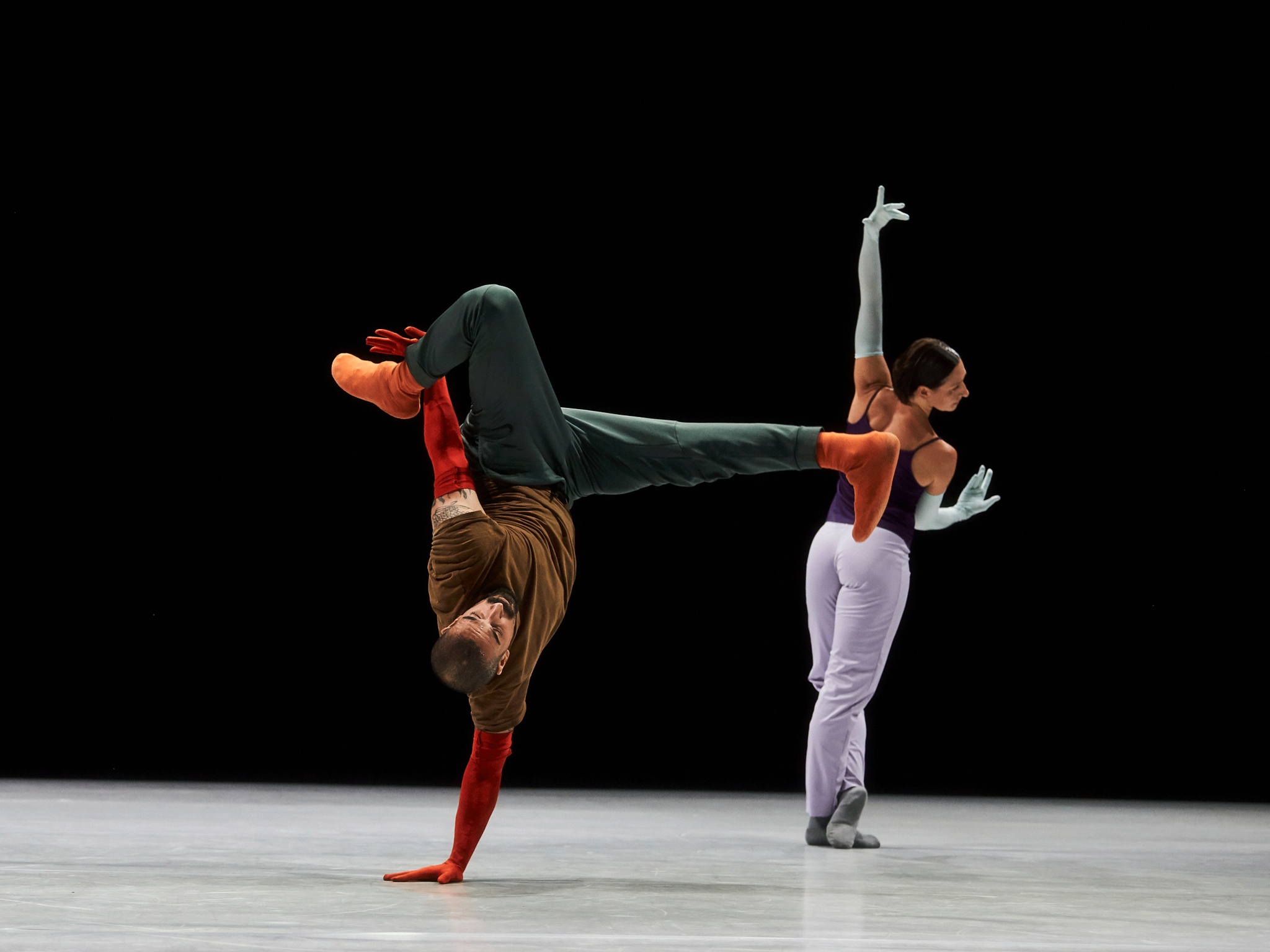

William Forsythe: A Quiet Evening of Dance
“Dance … that leaves audiences elevated, energized, overcome …”
“It is the kind of dance we rarely see anymore, one that leaves audiences elevated, energized, overcome by the sheer pleasure of movement and music.”
About this commission
Groundbreaking choreographer William Forsythe presents a vivid combination of new and existing work, performed by seven of Forsythe’s most trusted collaborators, in The Shed’s intimate Griffin Theater. The intricate phrasing of the dancers’ breath is the primary sound accompanying Forsythe’s choreography, which draws on the geometric origins of classical ballet and ranges from sparse analytic condensation to baroque-inspired counterpoint. The result is a new production that, like an evening of chamber music, feels designed to be listened to. A Quiet Evening of Dance includes two newly commissioned works, Epilogue and Seventeen/Twenty-One; two reimagined repertory works, Dialogue (DUO2015) and Catalogue (Second Edition); and Prologue, an excerpt in Act One of Seventeen/Twenty One.
A Quiet Evening of Dance is a Sadler’s Wells, London, production co-commissioned by The Shed; Théâtre de la Ville-Paris, Théâtre du Châtelet and Festival d’Automne à Paris; Festival Montpellier Danse 2019; Les Théâtres de la Ville de Luxembourg; Onassis Cultural Centre-Athens; and deSingel international arts campus (Antwerp). Winner of the FEDORA - VAN CLEEF & ARPELS Prize for Ballet 2018. First performed at Sadler’s Wells on October 4, 2018.
Please note: No late seating until intermission, please arrive early.
In The Works
William Forsythe has pushed the boundaries of ballet over the course of a nearly five-decade career. In A Quiet Evening of Dance, the intricate phrasing of the dancers’ breath is the primary sound accompanying Forsythe’s choreography, which draws on the geometric origins of classical ballet. Here, the groundbreaking choreographer describes the innovation specific to the choreography in A Quiet Evening of Dance.
What draws you to the variety of sources in your choreography—from classical ballet to hip hop—especially as they shaped A Quiet Evening of Dance?
I’m usually drawn to the formal elements of a practice and am interested in underlying, correlative facets that support ostensibly disparate practices.
What effect does the minimal musical accompaniment of A Quiet Evening of Dance have on your choreography? What is the origin of the different sounds in this production?
I’ve focused on the quality of attention in a number of different works for more than 25 years. In this program, the first act’s subtraction of sound contributes to the construction of a community of sensitive listeners. For myself, I find the sensation of dancing best described as a form of attention most akin to careful listening. As dancing does actually make noise in the process of its production, I find adjusting the levels of those acoustic artifacts modifies the spectator’s sense of proximity to the event at hand. This seems to produce a collective intimacy and focus that is of a different texture than when music is the dominant organizational referent. That does not mean that there is an a-musicality to the events, but rather a recognition arises out of the movements that the body is ultimately the most musical of instruments. The use of birdsong is a reflection on the inherently contrapuntal quality of natural sounds.
A Quiet Evening of Dance includes new work but also earlier pieces that you’ve revisited to present in new ways. What interests you in reworking old pieces?
The need to work on a piece for 20 years, as in the case of DUO, has to do with the evolution of dancers. Each successive generation bears testament to the culture in which they developed, and constant cultural shift has a wide range of effects on how artists listen to the products of their practice.
What role do the dancers play in your process of creating new work?
The dancer is absolutely everything.
What is shared between dance and other forms of art making?
If one understands choreography to be a sophisticated form of concept organization, it then holds the possibility of resonating with organizations of a similar sophistication that utilized a different medium to express their subject.
What changes in a dance production when it travels from one venue to another?
In my experience dance is always affected by proximity and the proportions of the performing volume. The proportions frame the action very uniquely and can unexpectedly amplify or shrink different facets of a production. This always results in the production team adapting the quantities and qualities to the situation at hand.
Creative Team
Dancers
Location and dates
Tuesday – Saturday at 7:30 pm
Sunday at 3 pm
Please note:
There is no performance on October 17.
Details
- Running time: 1 hour 40 minutes
- No late seating until intermission, please arrive early
Thank you to our partners



